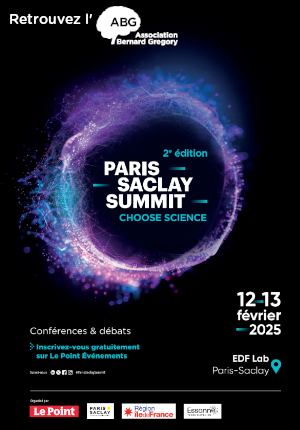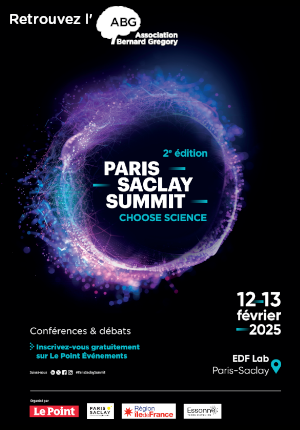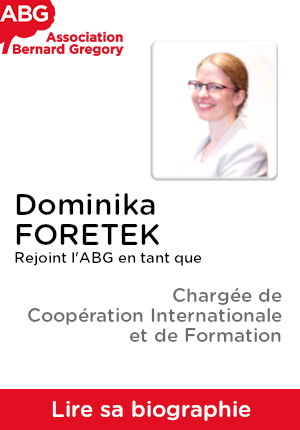ETUDE DES VARIATIONS DU CLIMAT SUR LES DERNIERS 1,5 MILLIONS D'ANNÉES À PARTIR DE LA DATATION DE LA CAROTTE DE GLACE BEYOND EPICA ET COMPARAISON AUX ARCHIVES MARINES. // STUDY OF CLIMATE VARIATIONS OVER THE LAST 1.5 MILLION YEARS BASED ON DATING OF THE BE
|
ABG-128298
ADUM-60266 |
Thesis topic | |
| 2025-02-03 |
Université Paris-Saclay GS Géosciences, climat, environnement et planètes
GIF-SUR-YVETTE - France
ETUDE DES VARIATIONS DU CLIMAT SUR LES DERNIERS 1,5 MILLIONS D'ANNÉES À PARTIR DE LA DATATION DE LA CAROTTE DE GLACE BEYOND EPICA ET COMPARAISON AUX ARCHIVES MARINES. // STUDY OF CLIMATE VARIATIONS OVER THE LAST 1.5 MILLION YEARS BASED ON DATING OF THE BE
- Earth, universe, space sciences
cycles climatiques, carottes de glace, sédiments marins, chronologie, transition du mi-pléistocène, paléoclimat
climatic cycles, ice cores, marine sediments, chronology, Mid Pleistocene transition, Paleoclimate
climatic cycles, ice cores, marine sediments, chronology, Mid Pleistocene transition, Paleoclimate
Topic description
Les changements climatiques passés sont essentiels pour comprendre le climat futur. La transition mid-pléistocène (MPT), survenue entre 1,2 et 0,8 million d'années, marque un changement dans la périodicité des cycles glaciaires et interglaciaires, qui ne peut être expliqué par des variations orbitales. Les causes de cette transition sont encore débattues, avec des hypothèses évoquant des changements dans la dynamique des calottes polaires ou la concentration de CO2. Pour étudier ces changements, l'analyse des carottes de glace est cruciale. Les carottes de glace sont des archives du climat polaire et de l'atmosphère, grâce aux nombreux traceurs géochimiques mesurés dans la glace et les bulles d'air piégées dans celle-ci. Le projet Beyond EPICA, lancé en 2021, vise à forer une nouvelle carotte de glace dans l'Antarctique, offrant des enregistrements climatiques sur 1,5 million d'années. Ce forage est en train d'atteindre son objectif pendant la saison d'été austral 2024-2025 fournissant un matériel unique pour l'étude du paléoclimat.
L'objectif principal de cette thèse est d'analyser les variations des cycles glaciaires et interglaciaires au
Quaternaire, en combinant les données de la carotte de glace Beyond EPICA et des sédiments marins. Ces derniers fournissent des informations sur le niveau de la mer et la circulation océanique, tandis que les carottes de glace permettent d'étudier la température polaire et la concentration de CO2. Une priorité initiale sera de développer une chronologie de la carotte Beyond EPICA sr le dernier 1,5 million d'années en utilisant les isotopes du dioxygène dans les bulles d'air. La thèse combinera ces données avec celles des sédiments marins, couvrant les mêmes périodes, pour mieux comprendre la dynamique climatique et les interactions entre forçages orbitaux et gaz à effet de serre. L'utilisation d'outils de datation multi-archives et de modélisation permettra d'étudier cette transition et son impact sur le climat. Cette recherche sera menée en équipe et implique des collaborations au sein des communautés française et européenne du paléoclimat.
------------------------------------------------------------------------------------------------------------------------------------------------------------------------
------------------------------------------------------------------------------------------------------------------------------------------------------------------------
Past climate changes are essential for understanding future climate. The Mid-Pleistocene Transition (MPT), which occurred between 1.2 and 0.8 million years ago, marks a shift in the periodicity of glacial and interglacial cycles, which cannot be explained by orbital variations. The causes of this transition are still debated, with hypotheses suggesting changes in the dynamics of polar ice sheets or CO2 concentration. To study these changes, ice core analysis is crucial. Ice cores are detailed archives of polar climate and the global atmosphere, owing to a wide range of geochemical tracers measured in the ice and the air bubbles trapped within it.
The Beyond EPICA project, launched in 2021, is finishing the drilling of a new ice core in Antarctica, offering climate records spanning 1.5 million years hence providing the longest continuous ice core records. The main goal of this thesis is to analyze variations in glacial and interglacial cycles during the Quaternary by combining data from this unique ice core and marine sediments. The latter provide information on sea level and ocean circulation, while ice cores allow for the study of polar temperature and CO2 concentration.
An initial priority will be to develop a chronology for the Beyond EPICA ice core using oxygen isotopes in the trapped air bubbles. The thesis will combine these data with marine sediment data covering the same periods to better understand climate dynamics and the interactions between orbital forcings
and greenhouse gases. The use of multi-archive dating tools and modeling will allow for a deeper investigation of this transition and its impact on the climate. This research project is collaborative and will be embeded within the French and European paleoclimate communities.
------------------------------------------------------------------------------------------------------------------------------------------------------------------------
------------------------------------------------------------------------------------------------------------------------------------------------------------------------
Début de la thèse : 01/10/2025
WEB : https://www.beyondepica.eu/en/
L'objectif principal de cette thèse est d'analyser les variations des cycles glaciaires et interglaciaires au
Quaternaire, en combinant les données de la carotte de glace Beyond EPICA et des sédiments marins. Ces derniers fournissent des informations sur le niveau de la mer et la circulation océanique, tandis que les carottes de glace permettent d'étudier la température polaire et la concentration de CO2. Une priorité initiale sera de développer une chronologie de la carotte Beyond EPICA sr le dernier 1,5 million d'années en utilisant les isotopes du dioxygène dans les bulles d'air. La thèse combinera ces données avec celles des sédiments marins, couvrant les mêmes périodes, pour mieux comprendre la dynamique climatique et les interactions entre forçages orbitaux et gaz à effet de serre. L'utilisation d'outils de datation multi-archives et de modélisation permettra d'étudier cette transition et son impact sur le climat. Cette recherche sera menée en équipe et implique des collaborations au sein des communautés française et européenne du paléoclimat.
------------------------------------------------------------------------------------------------------------------------------------------------------------------------
------------------------------------------------------------------------------------------------------------------------------------------------------------------------
Past climate changes are essential for understanding future climate. The Mid-Pleistocene Transition (MPT), which occurred between 1.2 and 0.8 million years ago, marks a shift in the periodicity of glacial and interglacial cycles, which cannot be explained by orbital variations. The causes of this transition are still debated, with hypotheses suggesting changes in the dynamics of polar ice sheets or CO2 concentration. To study these changes, ice core analysis is crucial. Ice cores are detailed archives of polar climate and the global atmosphere, owing to a wide range of geochemical tracers measured in the ice and the air bubbles trapped within it.
The Beyond EPICA project, launched in 2021, is finishing the drilling of a new ice core in Antarctica, offering climate records spanning 1.5 million years hence providing the longest continuous ice core records. The main goal of this thesis is to analyze variations in glacial and interglacial cycles during the Quaternary by combining data from this unique ice core and marine sediments. The latter provide information on sea level and ocean circulation, while ice cores allow for the study of polar temperature and CO2 concentration.
An initial priority will be to develop a chronology for the Beyond EPICA ice core using oxygen isotopes in the trapped air bubbles. The thesis will combine these data with marine sediment data covering the same periods to better understand climate dynamics and the interactions between orbital forcings
and greenhouse gases. The use of multi-archive dating tools and modeling will allow for a deeper investigation of this transition and its impact on the climate. This research project is collaborative and will be embeded within the French and European paleoclimate communities.
------------------------------------------------------------------------------------------------------------------------------------------------------------------------
------------------------------------------------------------------------------------------------------------------------------------------------------------------------
Début de la thèse : 01/10/2025
WEB : https://www.beyondepica.eu/en/
Funding category
Funding further details
Contrats ED : Programme blanc GS-GCE
Presentation of host institution and host laboratory
Université Paris-Saclay GS Géosciences, climat, environnement et planètes
Institution awarding doctoral degree
Université Paris-Saclay GS Géosciences, climat, environnement et planètes
Graduate school
129 Sciences de l'Environnement d'Ile-de-France
Candidate's profile
Master scientifique
- Connaissance en dynamique du climat et/ou géochimie environnementale
- Un goût pour l'expérimental
- Un goût pour le travail en équipe dans un contexte international
Master's degree in Science Knowledge in climate dynamics and/or environmental geochemistry A strong interest in experimental work Enjoys teamwork in an international setting
Master's degree in Science Knowledge in climate dynamics and/or environmental geochemistry A strong interest in experimental work Enjoys teamwork in an international setting
2025-05-31
Apply
Close
Vous avez déjà un compte ?
Nouvel utilisateur ?
More information about ABG?
Get ABG’s monthly newsletters including news, job offers, grants & fellowships and a selection of relevant events…
Discover our members
 Institut de Radioprotection et de Sureté Nucléaire - IRSN - Siège
Institut de Radioprotection et de Sureté Nucléaire - IRSN - Siège  ONERA - The French Aerospace Lab
ONERA - The French Aerospace Lab  MabDesign
MabDesign  Laboratoire National de Métrologie et d'Essais - LNE
Laboratoire National de Métrologie et d'Essais - LNE  MabDesign
MabDesign  Nokia Bell Labs France
Nokia Bell Labs France  PhDOOC
PhDOOC  ANRT
ANRT  CASDEN
CASDEN  SUEZ
SUEZ  Groupe AFNOR - Association française de normalisation
Groupe AFNOR - Association française de normalisation  TotalEnergies
TotalEnergies  Aérocentre, Pôle d'excellence régional
Aérocentre, Pôle d'excellence régional  ADEME
ADEME  Institut Sup'biotech de Paris
Institut Sup'biotech de Paris  Ifremer
Ifremer  Généthon
Généthon  Tecknowmetrix
Tecknowmetrix  CESI
CESI







